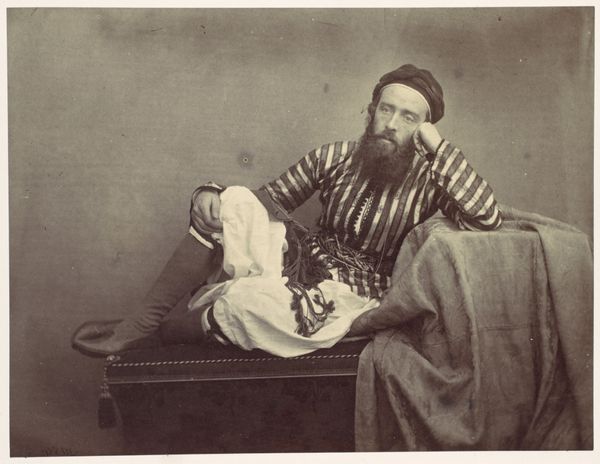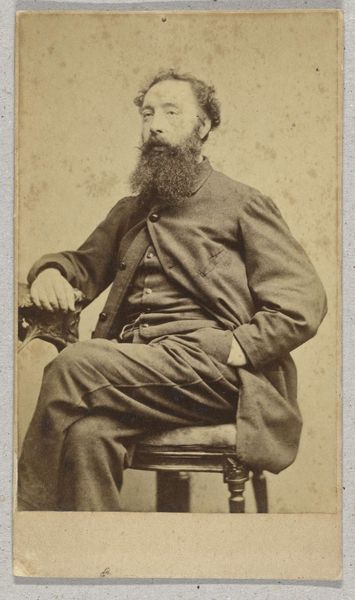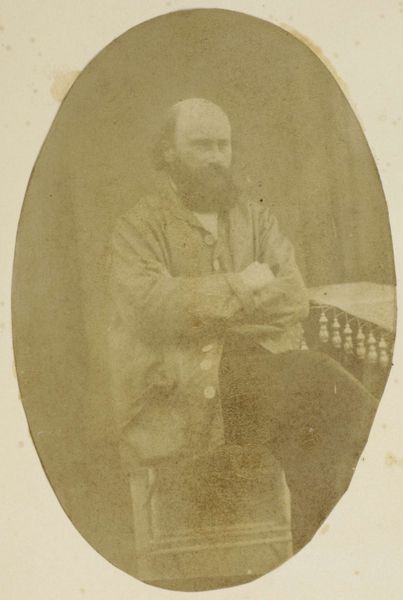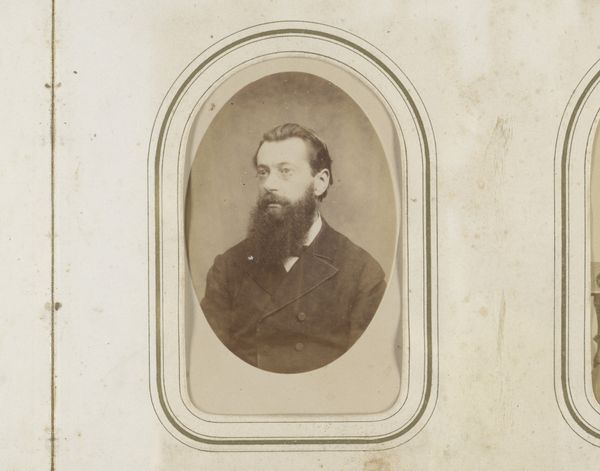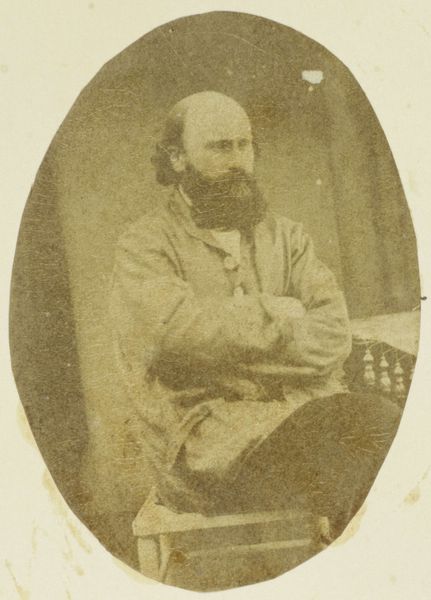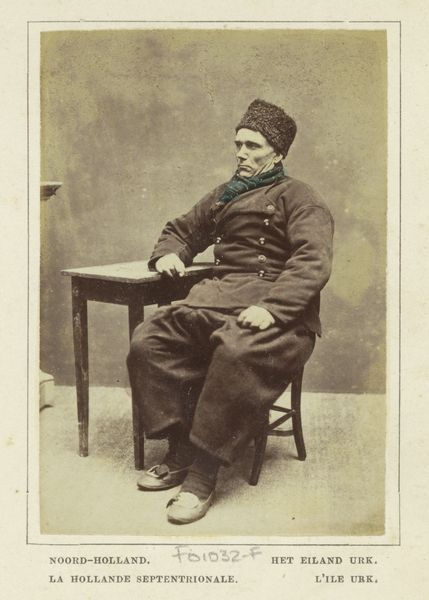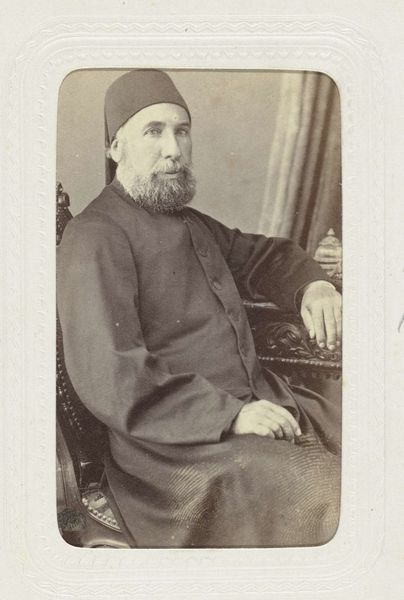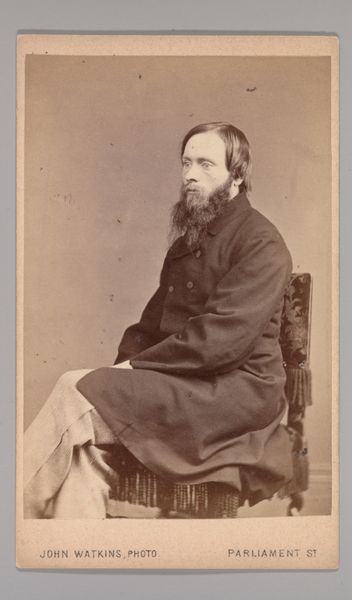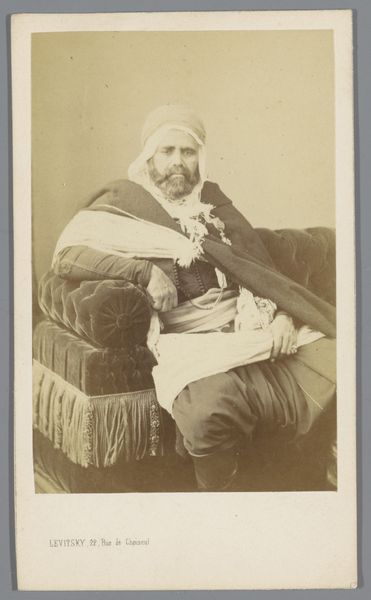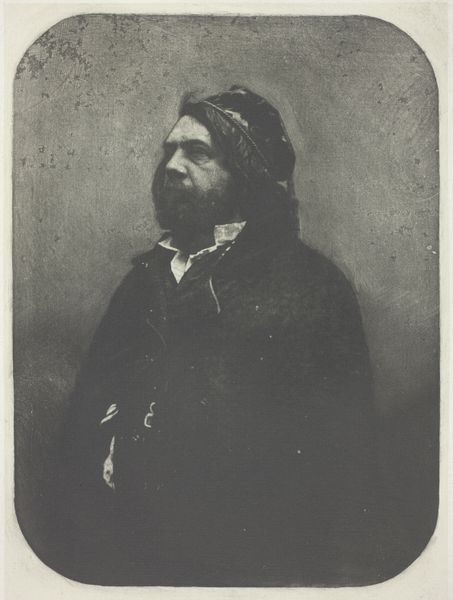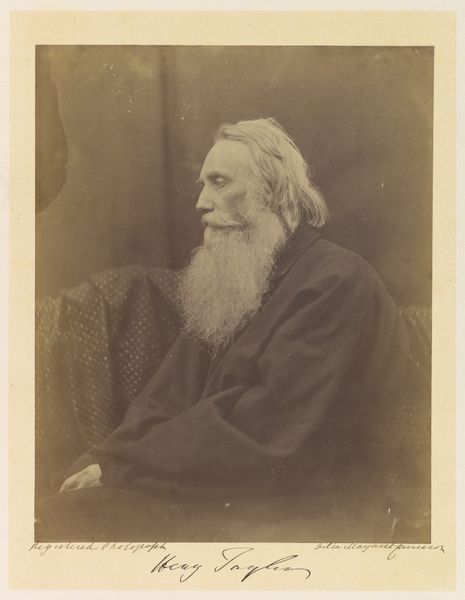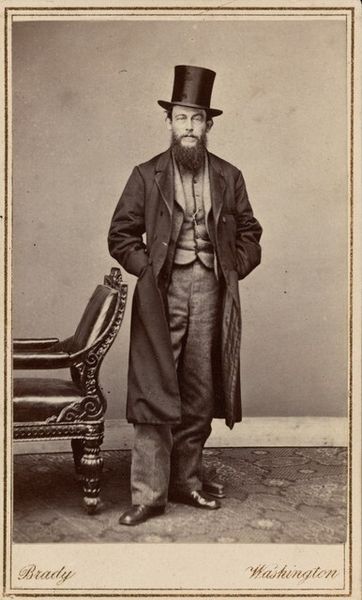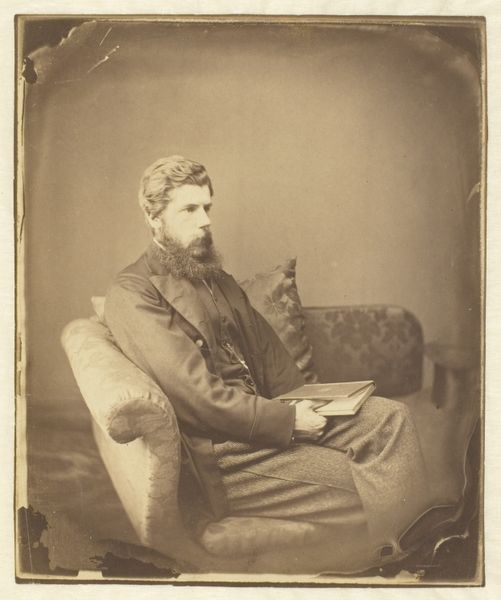
print, photography, gelatin-silver-print
#
portrait
# print
#
photography
#
gelatin-silver-print
#
pre-raphaelites
Dimensions: 24 × 19.1 cm (image/paper, oval); 44.3 × 35.5 cm (mount)
Copyright: Public Domain
Curator: Immediately striking, isn’t it? This gelatin-silver print by Julia Margaret Cameron, created in 1864, presents William Holman Hunt. Currently, it lives at the Art Institute of Chicago. The textures – the fabrics and his beard! – almost feel tangible. Editor: He seems adrift in thought. The soft focus adds to this dreamlike quality. The gaze is a little vacant, but powerful, almost as if Hunt has looked into the future! Curator: Knowing Cameron, I suspect that dreaminess was intentional. She sought more than mere likeness; she aimed to capture the soul. Look at the turban. It’s a peculiar choice, since it signals orientalism. Is Hunt depicted as a prophet, an artistic genius touched by the otherness, perhaps? Editor: I do not think she was really interested in an authentic portrayal but rather on the associations it carries. Turbans signify wisdom, journeys. In some ways, maybe Hunt had undertaken many artistic and spiritual quests and, therefore, deserved this symbolic headdress. It certainly speaks of Pre-Raphaelite interest in historical symbolism, and exoticized spirituality. Curator: Exactly. The soft focus and dreamy ambiance serve this interest of idealization, that search for an elusive, ethereal truth beyond the mundane. As Pre-Raphaelite, he searches for a truth and the symbolism makes the narrative accessible for many people. Editor: Considering her process, it’s intriguing that this portrait exists at all. Her methods were experimental, pushing the boundaries of the medium, frequently producing blurry results that defied conventional standards. So much imperfection seems unusual for this kind of idealized artwork. Curator: Perhaps it’s those “imperfections” that add to its unique charm. The blur softens his features, making him seem less of a man and more of an idea—the idea of a creative genius. I do think this tension captures much more what Julia M. Cameron wanted: emotion first of all. Editor: True. Cameron gave her portraits the status of a romantic relic, even in her own era. What do you think makes her experiment so relevant these days? Curator: I see an emotional openness. The picture conveys the way she explored intimacy between the artist and subject, showing their collaborative effort of defining identities, one as an artist and the other as a sitter and creator.
Comments
No comments
Be the first to comment and join the conversation on the ultimate creative platform.
